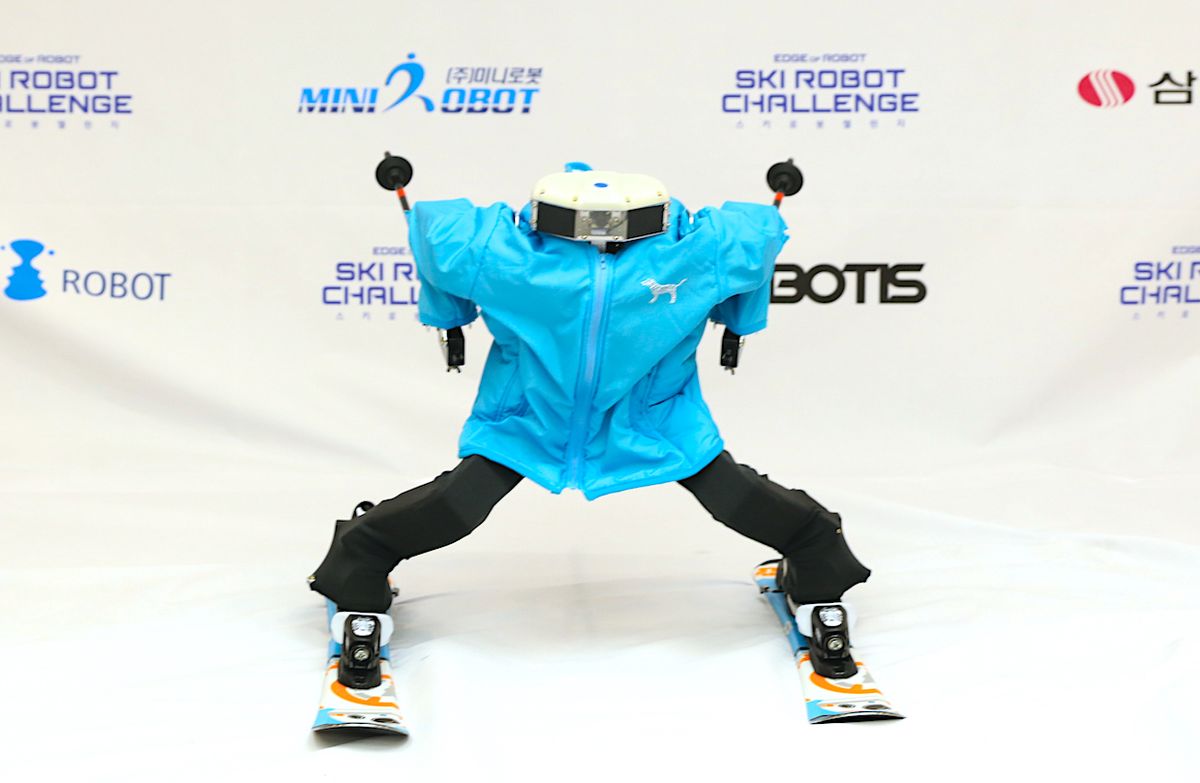The Winter Olympics in Pyeongchang, South Korea, ended late last month, and the most popular event (in our opinion, anyway) was the robotic ski competition. An admittedly hilarious video of the event went around last week, but we checked in with the Ski Robot Challenge organizers at the Korea Institute for Robot Industry Advancement for details, winners, and the adorable battle cries of each competitor.
Here’s an overview of the event, from the Korea Herald:
And here are the rules:
- Each robot must be humanoid, with a minimum of 15 degrees of freedom including functional elbows and knees;
- Each robot must be at least 50cm tall (measured from foot to shoulder);
- Robots are required to use both skis and poles, and the poles must touch the ground when the robot is standing with its elbows bent;
- The competition ski slope is 80m long and 20m wide, and teams have 3 minutes to complete it by slaloming through red and blue gates;
- Each robot gets one point per passed gate. Point ties are broken by fastest time, and in the event of a tie there as well, the tallest robot wins.
It’s important to note that all of the robots were fully autonomous, although there was also an optional competition for robots operating under remote control. We’ve got a slideshow below of all eight competitors, and each one has a battle cry of sorts, showing an amount of optimism that doesn’t necessarily belong in a robotics competition:
The winner in the autonomous category was Taekwon V, from Minirobot, a Korean robot maker based in Incheon. Taekwon V cleared all five gates in 18 seconds, while second place SKIRO, from the Korea Institute of Robot and Convergence (KIRO), also had a perfect run that took 22 seconds. SKIRO took first place in the remote control competition, with a five gate time of 15.31 seconds.
This is video of Taekwon V, showing some outtakes, robot-view of the navigation software running, and then some impressive run footage.
The course was a bit of a challenge for the robots, not just because it was steep and slippery (they were expecting that). A major hurdle was that it was bright enough to be tricky for vision systems, and also a little windy, although the robots were better able to cope than some of the humans, according to Reuters:
“I heard the Alpine skiing has been postponed again due to wind conditions. That’s a pity,” said Lee Sok-min, a member of the winning Minirobot team.
“Robots are doing fine here,” he said.
It’s great to see competitive robotics have even a small place in the Olympics, and we’re looking forward to even more robotics competitions in Tokyo in 2020.
Evan Ackerman is a senior editor at IEEE Spectrum. Since 2007, he has written over 6,000 articles on robotics and technology. He has a degree in Martian geology and is excellent at playing bagpipes.












